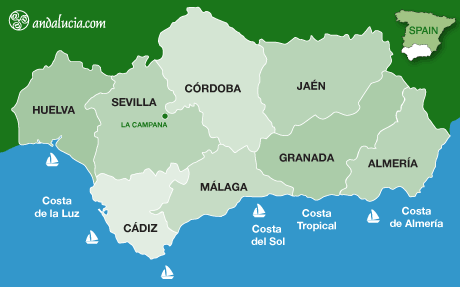LA CAMPANA
by Saskia Mier
La Campana is known for the Carrera de los Chamuscaos, a race that starts close to the town centre and ends in Fuentes de Andalucía, and was first used to settle the rivalry between the two towns. It has about 5,400 inhabitants.
HISTORY
The origin of La Campana dates to before the Bronze Age, suggested by the remains found in the areas of "Chaparral", "Pozo de la Anea" and in the remains of the Ermita de Santa Marina, where it is believed that there was some kind of human settlement. There are also Roman remains in La Cañuela, La Mesa and El Villar del Almirante. However, there are no historical reports of Moors and Visigoths until the thirteenth century.
The name of the population emerges within the first years of the Re-conquest. In 1412, the town was donated to Miguel Bocanegra by King Juan II of Castile, to found a population of up to fifty inhabitants. With the arrival of the Trastámaras and due to the needs of the Monarchy, La Campana was sold, which until 1558 had belonged to the jurisdiction of Carmona. In that year, Felipe II granted the village to Don Fadrique Enríquez de Ribera, the first Lord of La Campana, until 1810, when Señoríos were abolished.
On 20 January 1810, the French army entered La Campana. During the French occupation, the town was subjected to all kinds of sabotage, suffering serious political, economic and social consequences. During the Spanish War of Independence (1808-1812), the area showed resistance and defeated a French troop.
THINGS TO SEE
Iglesia Parroquial de Santa María la Blanca
The church dates from the sixteenth century, and its Neo-classical style from the nineteenth century. The interior has interesting decorative elements such as sculptures and paintings from the centuries seventeenth and eighteenth centuries. Located in Plaza de Andalucía.
Iglesia/Convento de San Sebastián
The church dates from the beginning of the eighteenth century. It houses religious sculptures and paintings from the seventeenth and eighteenth centuries. Located on Calle Convento.
Iglesia de San Lorenzo
The church was built throughout the eighteenth and nineteenth centuries. It is possible to emphasize a zócalo (border) of tiles from the eighteenth century and a crucifix from the sixteenth century. Located on Calle Larga.
Plaza de Andalucía
The buzzing main square of the town located in the centre not only has great atmosphere but some of the oldest bars and shops that have been going for decades in the town.
Hotels near La Campana
Book Hotels near La Campana
NATURAL AREAS
Parque de La Atalaya
A fantastic park where you can enjoy various activities, with a children's playground, picnic area and barbecue area. It has a great variety of vegetation and a very welcoming rural hotel. The park has a large restaurant where you can taste typical dishes. Located south of La Campana, on the A-456.
GASTRONOMY
La Campana is a popular area for shooting; therefore many of the local dishes are elaborated with game meats such as rabbit and partridge. Try the conejo (rabbit) or perdiz (partridge) con arroz, encebollada, en salsa (with rice, onion, in sauce), as well as gazpacho and salmorejo. The sweet empanadas (pasties) are a must, filled with cream, cinnamon and sugar.
HANDICRAFTS
A handicraft still produced in La Campana is carpentry. They produce furniture made of Brazilian mahogany and American walnut.
FESTIVALS
Cabalgata Reyes Magos
Three Kings procession celebrated on the evening of 5 January.
Carnaval
Celebrated in February.
Semana Santa
Holy Week.
Romería de la Virgen de Fátima
Celebrated the first weekend of May.
Feria de San Lorenzo
Celebrated in August.
San Nicolás "Los Toros"
Celebrated in September.
Carrera de los Chamuscaos
Celebrated at the end of November.
NEXT PLACES
The next villages to La Campana are Carmona, Fuentes de Andalucía and Lora del Río.

